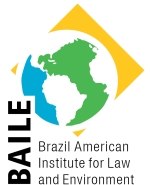Course Descriptions
Four courses have been developed specifically for this program:
- Introduction to U.S. Law
- U.S.Environmental Law
- Fundamentals of Brazilian Environmental Law
- International Environmental Law
Introduction to U.S. Law – Introduction to U.S. Law is designed to introduce foreign practitioners, law school graduates and exchange students to the concepts and tools used in United States law practice. It provides a solid foundation in basic American political and legal systems including the principles of separation of powers and branches; individual rights; Anglo-American common law practice and principles; the Constitutional order; judicial review; judicial precedent and case analysis; statutory interpretation; and the regulatory state.
U.S. Environmental Law – This course provides an introduction to the framework of the major federal environmental statutes and how the lawyer encounters them in practice (including the National Environmental Policy Act, Clean Water Act, Clean Air Act, and others). Throughout the course, problems of professional responsibility are integrated into consideration of the substance of each Statute. This course lays the foundation for advanced study of environmental subjects, and provides the generalist with a solid understanding of the legislative, administrative and judicial system of environmental law today.
Fundamentals of Brazilian Environmental Law – This course surveys the major aspects of the Brazilian environmental legal regime. It begins by differentiating the notion of collective and diffuse rights embedded in the fundamentals of environmental protection in Brazil and then turns to a general panorama of Brazilian Environmental Law, including its sources, foundational principles, and the complex yet crucial interweaving of federal, state and municipal authorities. With this background in place, the class will examine institutional framework known as the “National Environmental System” and management tools including the Environmental Impact Assessment and Permitting System. Lastly, the course looks at the notion of Environmental Damage and its accompanying administrative, civil and criminal liabilities.
International Environmental Law – This course examines the historical evolution of international environmental law since the 1972 landmark Stockholm Declaration on the Human Environment. It focuses on the issues inherent in regulating the global commons and on the concomitant international environmental legal principles through which the international community addresses regional and global environmental problems. By examining Multilateral Environmental Agreements (“MEAS”), the course explores the reasons underlying the conflicts and tension between developed and developing countries. It then analyzes the increasing leverage of developing countries in the decision-making process of MEAs. Finally, enforcement and compliance mechanisms of MEAs as well as economic and market incentives as instruments of international environmental policy will also be covered.

